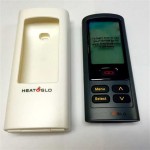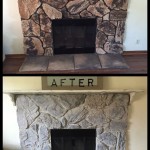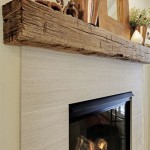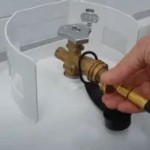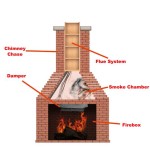Understanding Gas Fireplace Remote Controls: Functionality, Troubleshooting, and More
Gas fireplace remote controls offer convenience and enhanced control over the operation of gas fireplaces. These devices allow users to adjust flame height, turn the fireplace on or off, and in many cases, program specific temperature settings and timer functions from the comfort of their seats. Understanding the nuances of these remote controls, including their various features, potential issues, and maintenance requirements, ensures optimal performance and longevity of both the remote and the fireplace itself.
The integration of remote controls into gas fireplace systems represents a significant advancement over older manual controls. The ability to manipulate fireplace settings without needing to physically access the unit provides greater comfort and accessibility, particularly for individuals with mobility challenges. Furthermore, many modern remote controls incorporate safety features designed to prevent accidents and ensure efficient energy consumption.
This article provides a comprehensive overview of gas fireplace remote controls, covering their core functionalities, common problems, troubleshooting techniques, and essential information for selecting a replacement remote when necessary. It also delves into the aspects of safety and energy efficiency that are relevant to the use of these devices.
Key Components and Functionality of a Gas Fireplace Remote Control System
A typical gas fireplace remote control system comprises two main components: the handheld remote and the receiver unit, which is integrated into the fireplace itself. The remote transmits signals wirelessly to the receiver, which then interprets these signals and controls the gas valve, ignition system, and other relevant functionalities of the fireplace.
The handheld remote typically features a display screen that provides feedback on the current settings, such as flame height, temperature, and timer status. Buttons on the remote allow users to adjust these settings according to their preferences. More advanced remotes may also include programmable features that allow users to set up specific heating schedules or temperature ranges.
The receiver unit is usually located within the fireplace's control panel and is connected to the gas valve, igniter, and other essential components. It receives signals from the remote and translates them into commands that control the fireplace's operation. The receiver often includes a manual override switch, allowing users to operate the fireplace even if the remote is lost or malfunctioning.
The communication between the remote and the receiver typically relies on radio frequency (RF) signals. This ensures reliable communication, even through walls and other obstructions. Some systems operate on infrared (IR) signals, which require a direct line of sight between the remote and the receiver. RF-based systems are generally more robust and offer greater flexibility in terms of remote placement.
Specific functionalities offered by gas fireplace remote controls can vary depending on the model and manufacturer. However, common features include on/off control, flame height adjustment, thermostat control, and timer settings. Some remotes also offer features such as child safety locks, battery indicators, and diagnostic capabilities.
Flame height adjustment allows users to control the intensity of the fire, providing greater flexibility in terms of heat output and aesthetic appeal. Thermostat control enables the fireplace to maintain a specific room temperature automatically, enhancing comfort and energy efficiency. Timer settings allow users to schedule the fireplace to turn on or off at specific times, further optimizing energy consumption.
The complexity of a gas fireplace remote control system can vary significantly, ranging from simple on/off remotes to sophisticated programmable units with advanced features. The choice of remote control should be based on individual needs and preferences, taking into account factors such as desired functionality, ease of use, and budget.
Proper installation of the receiver unit is crucial for the reliable operation of the gas fireplace remote control system. It is essential to follow the manufacturer's instructions carefully and ensure that all connections are secure. Incorrect installation can lead to malfunctions and potentially dangerous situations.
It is also important to regularly inspect the remote and receiver for any signs of damage or wear. Damaged components should be replaced promptly to prevent performance degradation or safety hazards.
Common Problems and Troubleshooting Techniques
Gas fireplace remote controls, like any electronic device, can experience problems over time. Identifying and addressing these issues in a timely manner is essential for maintaining optimal performance and ensuring the safety of the fireplace system. Common problems include unresponsive remotes, intermittent operation, and error messages.
One of the most common issues is an unresponsive remote. This can be caused by several factors, including dead batteries, a faulty remote, or a malfunctioning receiver. The first step in troubleshooting an unresponsive remote is to replace the batteries with fresh ones. Ensure that the batteries are inserted correctly, paying attention to the polarity markings.
If replacing the batteries does not resolve the issue, the next step is to check the remote for any signs of damage. Inspect the buttons, display screen, and battery compartment for any cracks, corrosion, or other abnormalities. If any damage is apparent, the remote may need to be replaced. Before replacing, ensure the remote is transmitting a signal using a device that can read the signal, such as a cell phone camera (in some cases an infrared signal will be visible through the camera).
If the remote appears to be in good condition, the problem may lie with the receiver. Check the receiver's power supply and ensure that it is properly connected to the fireplace's control panel. If the receiver has a manual override switch, try using it to operate the fireplace. If the fireplace operates normally with the manual override switch, the problem is likely with the receiver itself.
Intermittent operation, where the remote works sporadically, can be caused by weak batteries, interference from other electronic devices, or a loose connection. Try replacing the batteries and moving the remote closer to the receiver to rule out these possibilities. Inspect the wiring connections between the receiver and the fireplace's control panel for any signs of looseness or corrosion. Tighten or clean any loose or corroded connections.
Error messages on the remote's display screen can provide valuable clues about the nature of the problem. Refer to the manufacturer's instructions for a list of error codes and their corresponding meanings. Common error messages may indicate a problem with the gas valve, igniter, or thermocouple. Consult a qualified technician to diagnose and repair any serious problems.
Another potential issue is interference from other electronic devices. Some electronic devices, such as cordless phones and wireless routers, can emit radio frequency signals that interfere with the remote's communication with the receiver. Try moving these devices away from the fireplace to see if it resolves the problem. Changing the channel on the remote and receiver (if this option is available) can also help to reduce interference.
If none of these troubleshooting steps resolve the problem, it may be necessary to consult a qualified technician. A technician can diagnose and repair complex issues with the gas fireplace remote control system, ensuring that it operates safely and efficiently.
Regular maintenance can help to prevent problems with gas fireplace remote controls. Clean the remote and receiver regularly with a soft, dry cloth to remove dust and dirt. Avoid exposing the remote to extreme temperatures or moisture. Replace the batteries regularly, even if they are not completely drained, to prevent corrosion and leakage.
Choosing a Replacement Remote Control
When a gas fireplace remote control malfunctions beyond repair, or when upgrading to a more advanced system is desired, selecting a suitable replacement is crucial. The selection process should consider compatibility, features, and safety aspects. It is essential to choose a replacement remote that is compatible with the existing fireplace system to ensure proper functionality.
The first step in choosing a replacement remote is to identify the make and model of the existing fireplace and remote control system. This information can usually be found on a label or sticker located on the fireplace or in the owner's manual. Knowing the make and model will help to narrow down the selection of compatible replacement remotes.
Some replacement remotes are designed to be universal, meaning that they are compatible with a wide range of gas fireplace systems. However, universal remotes may not offer all the features and functionality of the original remote. It is important to carefully review the specifications of a universal remote before purchasing it to ensure that it meets your needs.
Consider the features offered by the replacement remote. Do you need a remote with thermostat control, timer settings, or other advanced features? Choose a remote that offers the functionalities that are important to you. Evaluate the user-friendliness of the remote. Is the display screen easy to read? Are the buttons clearly labeled and easy to press?
When selecting a replacement remote, it is also important to consider safety aspects. Look for remotes that have safety features such as child safety locks and battery indicators. These features can help to prevent accidents and ensure the safe operation of the fireplace.
Read reviews from other users before purchasing a replacement remote. Reviews can provide valuable insights into the quality, performance, and reliability of the remote. Pay attention to any negative reviews and consider whether the reported issues are a concern.
Purchase the replacement remote from a reputable retailer or manufacturer. This will ensure that you are getting a genuine product and that you have access to customer support if needed. Check the retailer's return policy before purchasing the remote in case it is incompatible or defective.
After purchasing the replacement remote, follow the manufacturer's instructions carefully when installing and programming it. Ensure that the remote is properly synchronized with the receiver unit to ensure proper communication. Test all the functions of the remote to verify that it is working correctly.
By carefully considering these factors, you can choose a replacement gas fireplace remote control that is compatible, functional, and safe, ensuring years of reliable performance.

Rfc Model Fireplace Remote Control Grand Mate Noted Accessories Supplier

Gas Fireplace Remotes More Fireplaceremotecontrols Com

Gas Fireplace Remote Control Guide Fireplaces Direct Learning Center

Skytech Manual Remote Control With Timer For Gas Logs Fine S

Sit Gas Fireplace Or Stove Remote Control Wall Bracket Hechler S Mainstreet Hearth Home Troy Missouri

Fireplace Remote Control How To S Spotix Blog

Replacement Fireplace Remote Control Manuals Fireplaceremotecontrols Blog

Gas Fireplace Remote Control Guide Fireplaces Direct Learning Center

Remote Controls For Gas Fireplaces Comfy Hearth

Amazing Deals And Donations Gas Fireplace Remote Control For Millivolt Valve New
Related Posts

